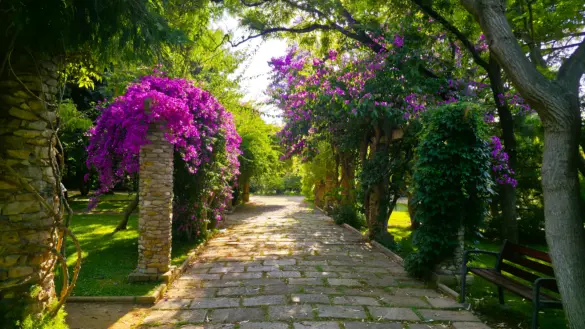Hola, world travelers!Some places take your breath away not because they’re grand, but because they’re honest.Tucked within the leafy slopes of Montjuïc, away from the crowds and noise, I found one such place: the AIDS Memorial of Barcelona (Monument a les persones afectades pel VIH-Sida). It’s quiet, unassuming, and deeply human – a space that invites reflection, remembrance, and gratitude.What makes it so moving is its simplicity. It doesn’t stand above the landscape, it lives within it, surrounded by sunlight, flowers, and the sound of wind through the trees.
A Memorial Hidden Among the Trees
The Jardí d’Aclimatació is one of Montjuïc’s hidden gems, a botanical garden created in 1930 by Nicolau M. Rubió i Tudurí to showcase Mediterranean and subtropical species. It’s a place where nature feels almost intimate: winding paths shaded by palm and pine, small stone terraces filled with flowers, and benches tucked between flowering shrubs. As you wander through its two levels connected by stone steps, you’ll see hibiscus, bougainvillea, oleander, lavender, and geraniums, their colors glowing against the silvery greens of olive and laurel. With over 230 different plant species, butterflies flutter from bloom to bloom, and the air carries the faint scent of jasmine and warm earth.
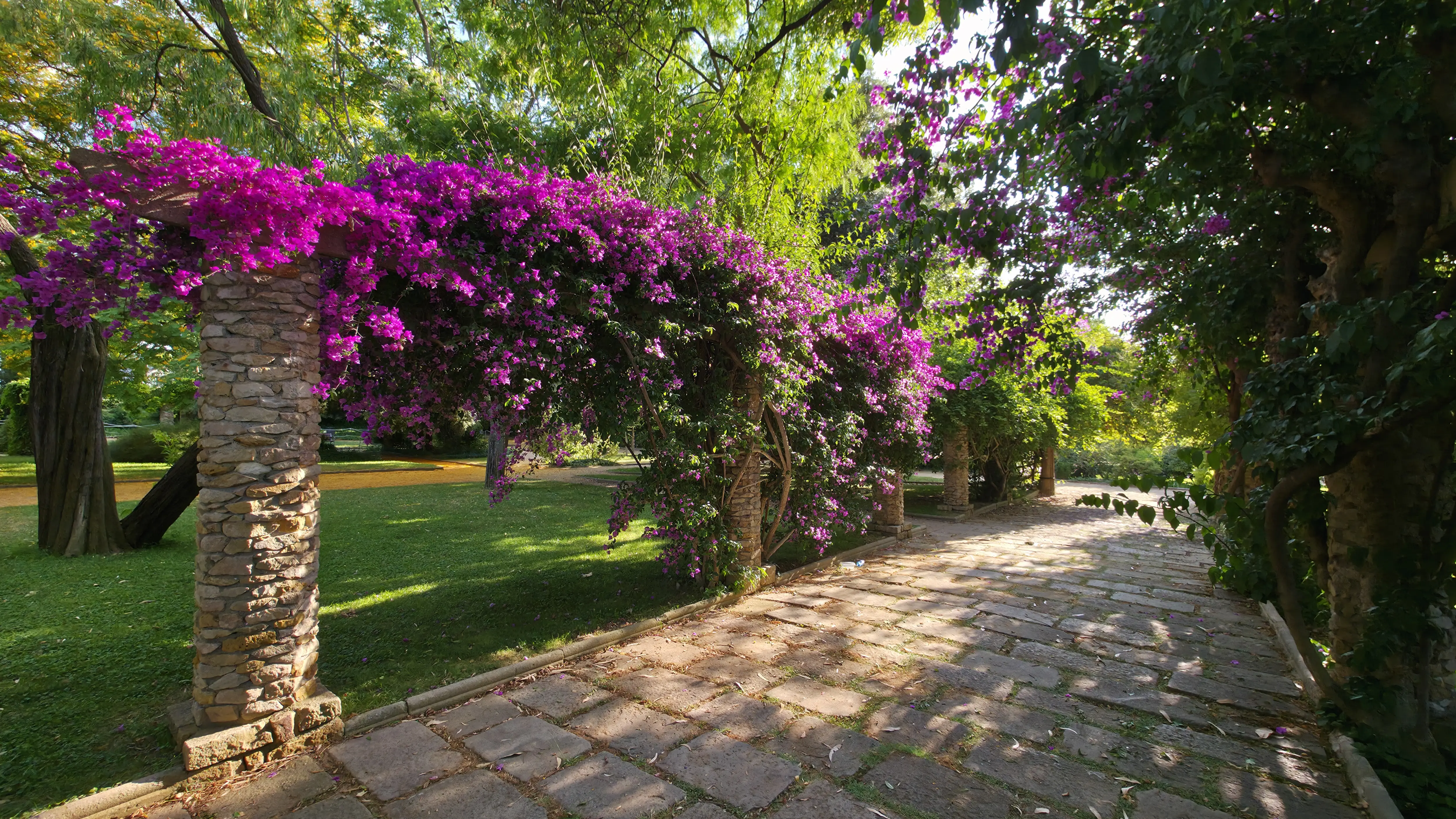
It’s in this peaceful, blooming setting that the AIDS Memorial rests, inaugurated in 2003 as a tribute to all those whose lives were touched by HIV and AIDS. Designed by architect Patrizia Falcone with participation from professional gardener Lluís Abad, it’s not a monument of marble or bronze, but of profound simplicity and natural symbolism. You might not notice it right away, and that’s the point. It appears slowly, revealed by light filtering through the trees.
The Meaning Behind the Design
The design of the memorial is humble yet profoundly symbolic. At its heart stand an olive tree and a rock, universal emblems of peace and eternity. There are no statues, no inscriptions in marble, only these timeless natural elements that speak quietly of resilience and remembrance. The path leading to the memorial is part of the tribute itself: stones engraved with verses by Catalan poet Miquel Martí i Pol guide your steps, turning the walk into a contemplative journey. Each line honors loss, celebrates life, and offers solace, an invitation to reflect with every step.
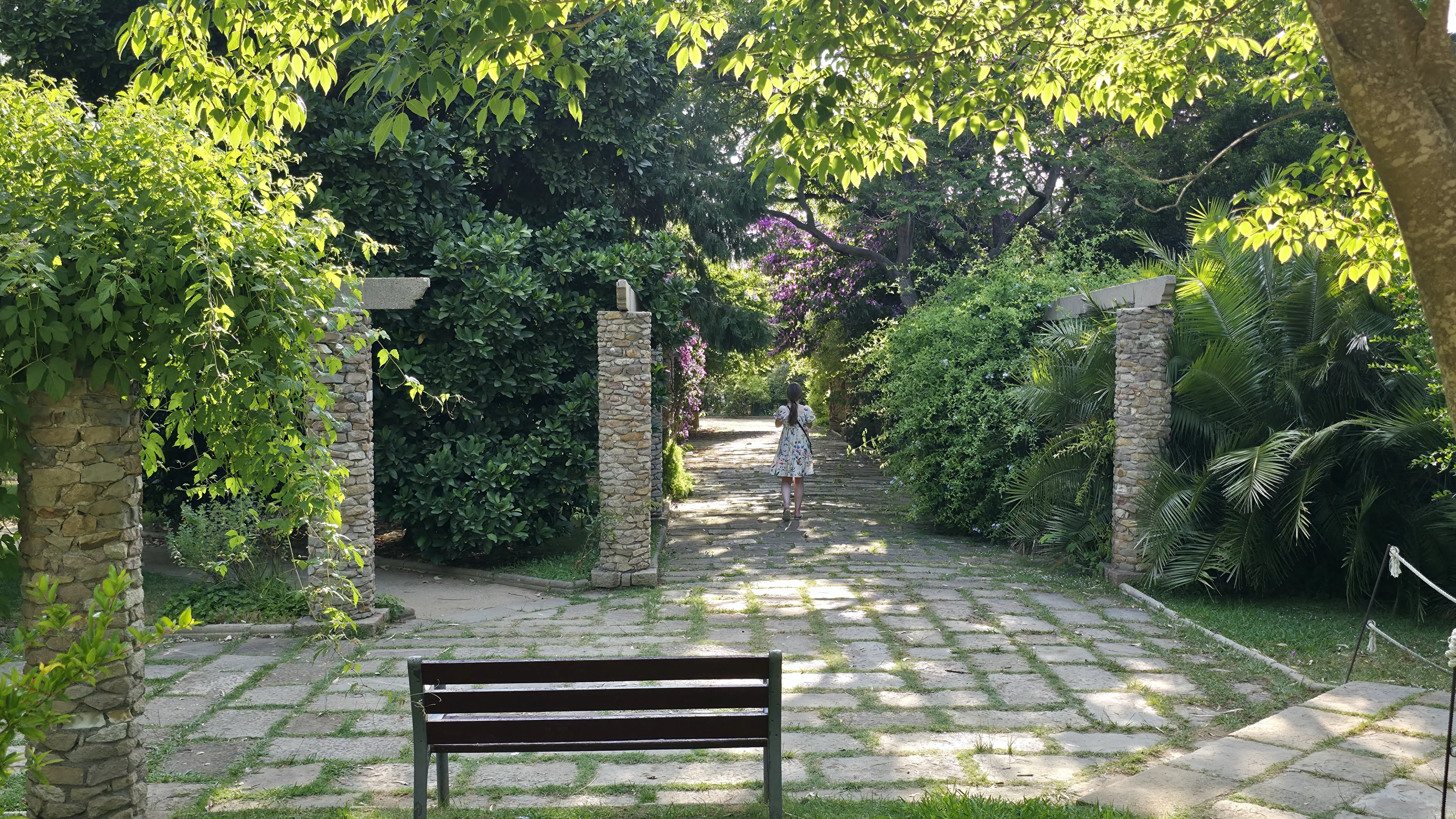
That simplicity is intentional. The architects envisioned a living memorial, one that changes with the seasons and breathes with the garden around it. The olive tree, a symbol of peace across cultures, stands for hope and healing. The rock, unyielding and grounded, embodies permanence and strength. Together, they create a space that endures. In spring, sunlight filters through the olive branches, scattering dappled light across the engraved stones. In autumn, fallen leaves form a golden carpet at the tree’s base. And in every season, the space remains what it was meant to be, a sanctuary of presence and peace.
Through My Eyes
I discovered the memorial almost by accident, after a morning at Montjuïc Castle. The path wound gently downward through the gardens, and I followed it without much thought, drawn by the scent of flowers and the play of light between the trees. The hum of the city faded away, replaced by birdsong and the soft rustle of leaves. A few petals had drifted onto the benches, carried by the breeze.
I sat for a long time, not out of sadness, but out of stillness. In that moment, I thought about the people this memorial honors: those who fought for awareness, those who cared for others, and those whose stories live quietly in the hearts of loved ones. There was something incredibly moving about how alive it all felt. Surrounded by flowers and light, it didn’t feel like a place of loss, it felt like a place of love.
Sometimes, remembrance doesn’t need words. Sometimes, it’s enough just to sit, to breathe, to notice, to feel.
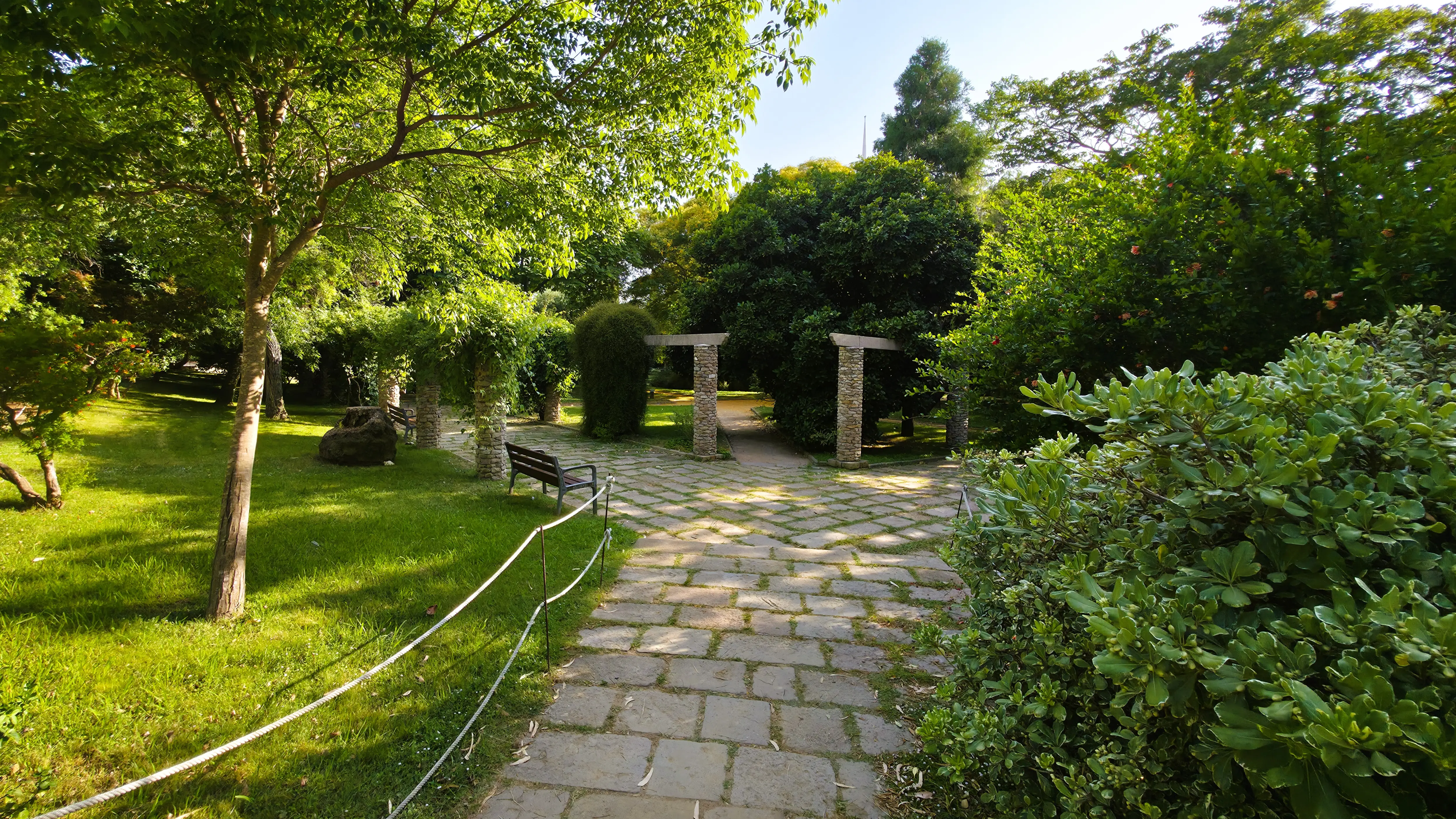
Visiting the AIDS Memorial
If you’d like to visit, it’s a gentle and grounding experience – simple, natural, and deeply meaningful.
- Location: Jardí d’Aclimatació de Montjuïc, Av. de l’Estadi 42-48, nestled between the Olympic Stadium and the Piscines Picornell.
- How to Get There: Funicular de Montjuïc or Bus 150, then walk to the garden entrance near the Olympic Stadium.
- Best Time: Early morning or late afternoon for soft light and quiet contemplation.
- What to Bring: Water, comfortable shoes, and time – this isn’t a place to rush.
- Nearby: Miramar Gardens, Montjuïc Castle, and Joan Miró Foundation are all within walking distance.
- Photography Tip: Focus on the olive tree, the engraved stones with poetry, sunlight filtering through branches, and the natural beauty of the surrounding garden.
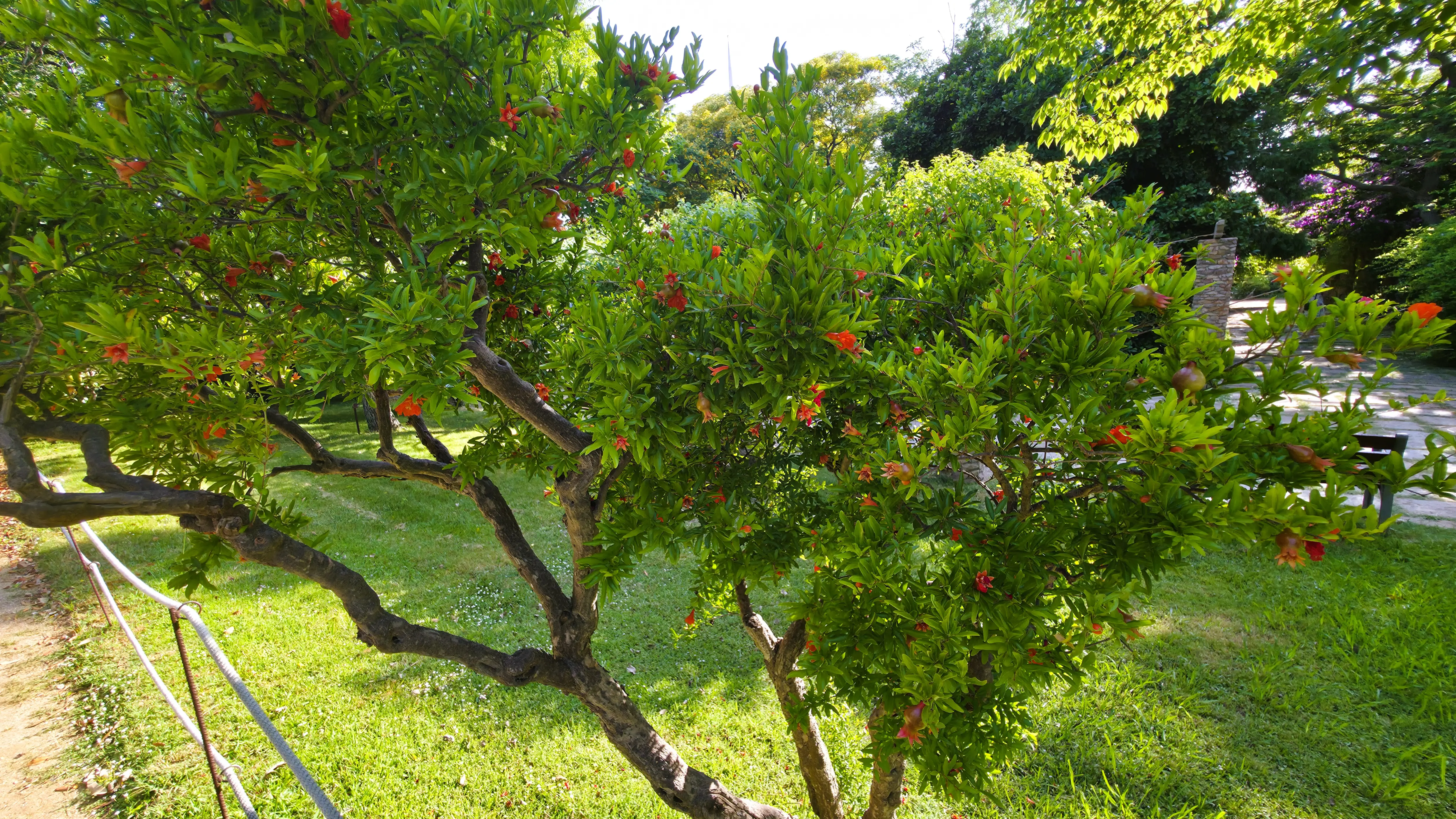
Final Thoughts
The AIDS Memorial in Barcelona is a space of quiet dignity, a place where memory and life meet in balance. It’s not dramatic or grand; it’s tender, thoughtful, and open. The way the garden wraps around it feels symbolic, a reminder that even when we remember loss, the world keeps blooming around us.
As I left, I turned back once more. A butterfly passed through the clearing, landing for a moment on a cluster of flowers before lifting into the light. And I thought: perhaps that’s the perfect image of what this space means: resilience, grace, and renewal.
If you ever find yourself exploring Montjuïc, take a detour here. Sit among the flowers, listen to the leaves, and let the peace of this place remind you that remembrance can also be radiant.
xoxo,
Bubbly🌈

